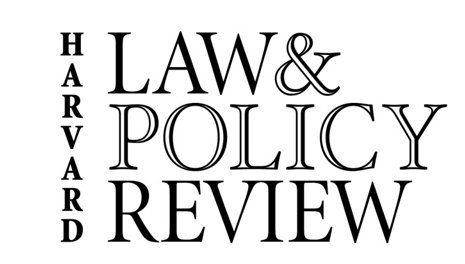By Jonathan Peters
Follow me @jonathanwpeters on Twitter.
Your tweets are no different from bank records, a New York judge ruled Monday. Prosecutors had subpoenaed an Occupy protestor’s tweets after he was arrested in the fall during a Brooklyn Bridge protest. The judge was ruling on the protestor’s motion to quash the subpoena, which sought “user information, including email address,” and three months of tweets from the protestor’s Twitter feed. As Adam Martinwrote in The Atlantic:
Judge Matthew Sciarrino Jr. wrote that there was no precedent in New York for an order to quash a subpoena to a “third-party online social networking service seeking to obtain the defendant’s user information and postings.” But he wrote that “an analogy may be drawn to the bank record cases where courts have consistently held that an individual has no right to challenge a subpoena issued against the third-party bank.” Sciarrino ruled that [the protestor] couldn’t quash the subpoena, but he didn’t necessarily rule that the tweets or other information would be admissible as evidence.
The judge added that prosecutors proved that the tweets might be relevant to the case against the protestor, calling into question his “anticipated defense” that police officers led protesters onto the bridge before arresting them. The judge also said that ”Twitter’s license to use the defendant’s Tweets means that the Tweets the defendant posted were not his.” (The license is non-exclusive.) For its part, Twitter had notified the protestor of the subpoena and had refused to comply with it while the protestor prepared his motion to quash.
I’m troubled by the judge’s reasoning.
First, he doesn’t appear to understand the nature of social media. Take, for example, footnote 3 of the opinion: “The reality of today’s world is that social media, whether it be Twitter, Facebook, Pinterest, Google+ or any other site, is the way people communicate and to some extent has supplemented email for many people.”
It’s a bit strange to say that social media have “supplemented” email, because social media haven’t really added to email. They’re just different. In other words, the purposes and capabilities of email are different from the purposes and capabilities of Twitter, Facebook, Pinterest, etc. So the judge is comparing apples to oranges, in a way that reminds me of the time a friend asked me if she should “buy a Twitter device.”
Second, tweets are different from bank records. The latter, quite literally, are the business records of the bank. They document the business transactions between the bank and its customers. As a result, the records belong to the bank, and the customer cannot claim that he owns or possesses them. Fair enough. But tweets are not the business records of Twitter, and they do not document the business transactions between Twitter and its users.
Even though Twitter retains a non-exclusive license to use them, tweets are a form of user-generated content, and they are personal and expressive, unlike bank records. Even the judge said as much in his opinion: “With a click of the mouse or now with even the touch of a finger, Twitter users are able to transmit their personal thoughts, ideas, declarations, schemes, pictures, videos and location, for the public to view.” He also referred to Twitter as “an information network.” Again, apples to oranges, bank records to tweets.
Third, the judge helpfully explains that “we do not have a physical ‘home’ on the Internet” and that “the Fourth Amendment provides protection for our physical homes.” (My friends who play FarmVille will be super pissed when they learn this.) The judge goes on to describe the Internet’s infrastructure, which is different, of course, from a physical home’s:
What an Internet user simply has is a network account consisting of a block of computer storage that is owned by a network service provider. As a user, we may think that storage space to be like a “virtual home,” and with that strong privacy protection similar to our physical homes. However, that “home” is a block of ones and zeroes stored somewhere on someone’s computer. As a consequence, some of our most private information is sent to third parties and held far away on remote network servers. A Twitter user may think that the same “home” principle may be applied to their Twitter account. When in reality the user is sending information to the third party, Twitter.
Argh. No less than the U.S. Supreme Court has said otherwise, that the Fourth Amendment does not “turn upon the presence or absence of a physical intrusion.” Katz v. United States, 389 U. S. 347, 353 (1967). And as Justice Sotomayor wrote in her concurring opinion in U.S. v. Jones, it’s time “to reconsider the premise that an individual has no reasonable expectation of privacy in information voluntarily disclosed to third parties.” 565 U.S. __ at 5 (2012). The New York case, admittedly, might not be a great vehicle to test that premise, because it involved publicly accessible tweets. But the underlying principle remains.
The mere fact that information is “held far away on remote network servers” shouldn’t dictate the Fourth Amendment protection for that information, not in a world where more people are doing more things online, many of them mundane. Today, I store information in the cloud that one year ago I would have stored on a local server or in a desk drawer. Today, sending information online to third parties is a function of my daily affairs. Today, the Fourth Amendment would turn a blind eye. That’s bad policy, and as Sotomayor wrote, “this approach is ill suited to the digital age.”
Jonathan Peters is a media lawyer and the Frank Martin Fellow at the Missouri School of Journalism, where he is working on his Ph.D. and specializing in the First Amendment. He has written on legal issues for a variety of news outlets, most recently the Columbia Journalism Review, The Nation, Wired and PBS. Email him at jonathan.w.peters@gmail.com. Follow me @jonathanwpeters on Twitter.
